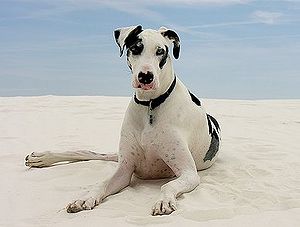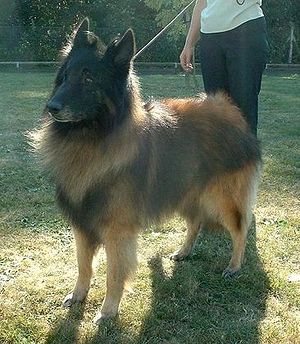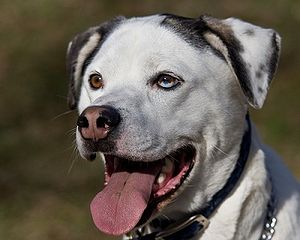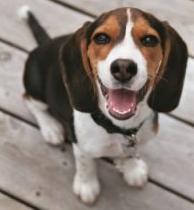 |
| Vital Statistics: |
| Place of Origin: Germany |
| Group: Working dog |
| Height: males 30 in. min., females 28 in. min. |
| Weight: males 120 lbs. and up, females 100 lbs. & up |
| Life span: 8-10 yrs. |
| Trainability: moderate |
| Good with children: yes |
| Good with other pets: yes |
German Gaul and parts of Italy and Spain were invaded in 407AD by the Alans, an Asiatic people. They brought with them powerful Mastiff like dogs and the Germans began a selective breeding process. Crossed with the Irish Greyhound and Irish Wolfhound, we have the large, agile beautiful Great Dane of today. Although the name seems to indicate the Great Dane has no connection with Denmark. The State of Pennsylvania (U.S.) recognized the Great Dane, often referred to as the “King of Dogs”, as the state mascot in 1965.
What does the Great Dane look like?
The Great Dane is a giant dog, powerful and elegant. Depending on gender, height is about 28-30 inches tall and up and weight can be from 100-200 lbs. It has a long, narrow head with white teeth that close in a scissors bite. Its eyes are dark and ears, if docked, are long and pointed and erect. The coat is shiny with thick, close-fitting hair. Colors are tawny, black, brindle and harlequin (white with black irregular markings).
What is the Great Dane’s temperament?
The Great Dane is a good-natured dog, steady, affectionate and patient. It will be protective if circumstances require it. Firm obedience training is important with a dog of this size. Lots of exercise and daily long walks are a must particularly with apartment dwellers. Care should be taken exercising young dogs.
What are the Great Dane’s uses?
In years past the Great Dane was used in battle. It has also been a hunter, pulled carts, as a watchdog and a guard dog. While it’s still used as a watchdog today, due to its beauty and good nature, it is an ornamental companion dog.
Possible Health Issues
Bloat/gastric torsion, Wobbler’s Disease, heart problems, autoimmune issues, cherry eye, hypertrophic osteodystrophy (HOD, swollen joints), cataracts, hip dysplasia, cancer(especially OSA).
- Akbash Dog
- Alaskan Malamute
- Anatolian Shepherd Dog
- Appenzell Mountain Dog
- Belgian Malinois
- Boxer
- Burnese Mountain Dog
- Canaan Dog
- Chinook
- Deutscher (German) Pinscher
- Doberman Pinscher
- Dogue de Bordeaux
- Estrela Mountain Dog
- German Spitz (Giant, Standard, Toy)
- Giant Schnauzer
- Greater Swiss Mountain Dog
- Greenland
- Irish Red & White Setter
- Kai Ken
- Korean Jindo Dog
- Kuvasz
- Laika
- Leonberger
- Newfoundland
- Norwegian Elkhound
- Rat Terrier
- Rottweiler
- Saint Bernard
- Samoyed
- Siberian Husky
- Standard Schnauzer
- Tibetan Mastiff
- Affenpinscher
- Boxer
- Dachshund
- Deutscher (German) Pinscher
- Doberman Pinscher
- Eurasier
- German Shepherd
- German Shorthaired Pointer
- German Spitz (Giant, Standard, Toy)
- Giant Schnauzer
- Hovawart
- Leonberger
- Miniature Pinscher
- Miniature Schnauzer
- Pomeranian
- Poodle
- Pudelpointer
- Rottweiler
- Standard Schnauzer
- Weimaraner



